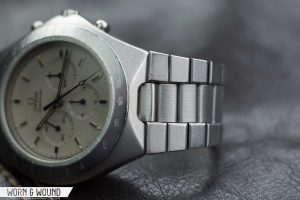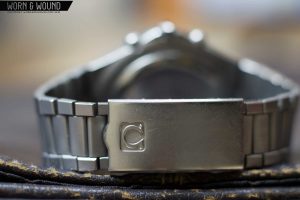Contrary to popular belief, not all Omega Speedmasters Fake Watches are “Moonwatches” – those are specific versions that are either direct descents of the Apollo 11 Speedmaster Professional watches or versions that Omega created in honor of the lunar landing.

Sporting a case that is 39mm in diameter, the aptly named ‘Reduced’ is noticeably smaller than the 42mm size of the Speedmaster Professional watches. It is also slighter than the 41.5mm size of the Co-Axial Speedmaster ’57 model and the 44.25mm size of the Speedmaster Racing edition.
The Omega Replica Speedmaster Reduced is also sometimes referred to as the Speedmaster Automatic because, well, it runs on an automatic movement! This is in contrast to Speedmaster Professional “Moonwatches,” which are famous for their manually-wound calibers.

Due to the movement, the layout of the Speedmaster Reduced dial has the trio of registers spread out quite significantly where they are almost touching the outer minute track. Compare that to the Speedmaster Professional models where the three sub-dials are positioned much closer to the center. Also take note of the “AUTOMATIC” label on the dial, just under the Omega Replica Watches Speedmaster logo.
As Omega initially promised, the Speedmaster Reduced is a smaller and less expensive version of its more famous Speedy Pro brother. Some may also argue it is a more practical version thanks to its self-winding movement.








